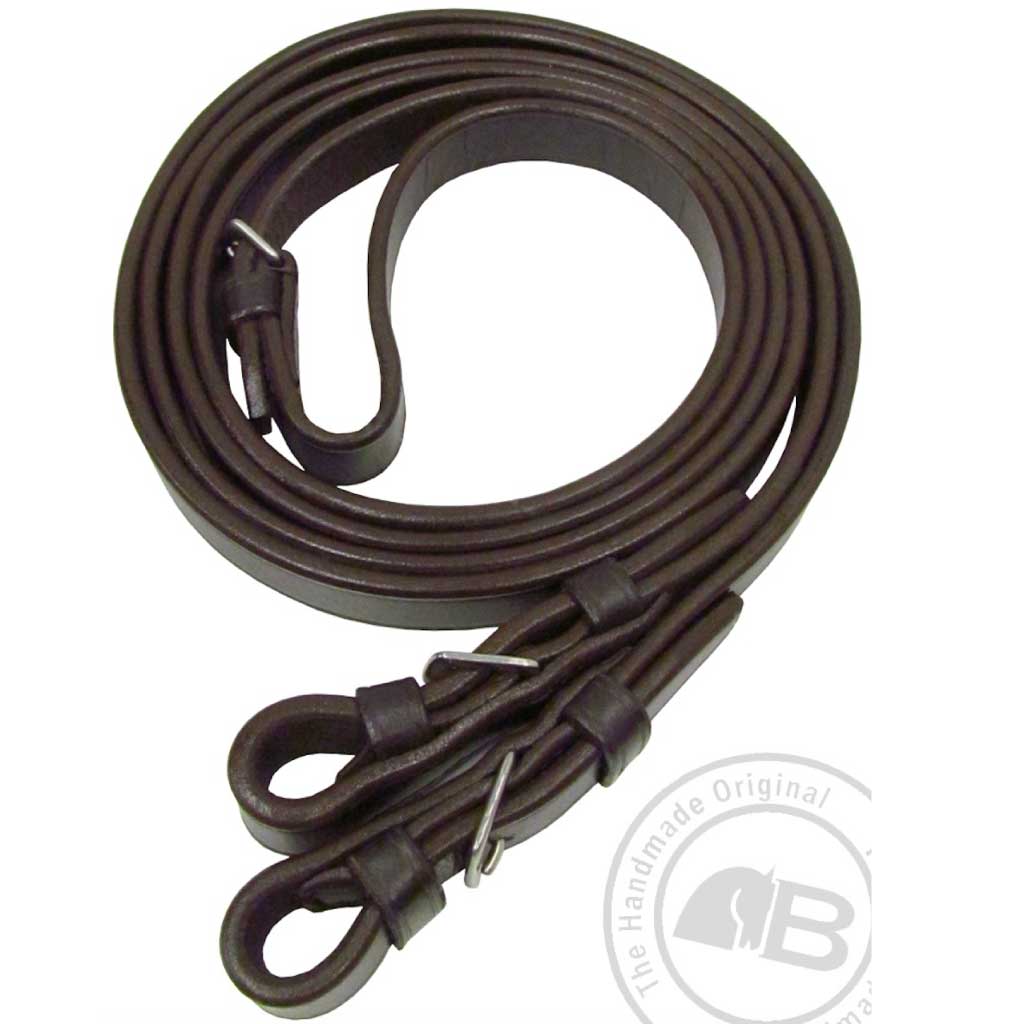Your Cart is Empty
Free AU shipping over $150. Please select Express Shipping if urgent.
Menu
-
- Home
- Polo Gear
- Polocrosse Gear
- Kids
- Bomber Bits
- Info
- About Us
- Code of Ethics
- Tips & Tricks
- Bomber Bit Guide and Sizing - How to measure a horse bit
- Polo Club & Association Directory
-
Polocrosse Clubs & Associations
- NSW Polocrosse Clubs & Associations
- Victorian Polocrosse Clubs & Associations
- Queensland Polocrosse Clubs & Associations
- South Australia Polocrosse Clubs & Associations
- Western Australia Polocrosse Clubs & Associations
- Tasmanian Polocrosse Clubs & Associations
- Northern Territory Polocrosse Clubs & Associations
- Contact
-
- (03) 5273 0225
- Login

Free AU shipping over $150. Please select Express Shipping if urgent.

Running Reins vs Straight Reins
March 18, 2021 2 min read
Different types of reins have pros and cons. You might be surprised to know some of the advantages.
First, the kinds of reins usually used in polo are:
- plain reins or straight reins - leather reins that run from the bit to the player's hand. They usually have a buckle in the middle.
- curb reins - run from the "curb" of the bit to the player's hands, so it's the rein on the bottom used to curl the horse's head down and under. On a polo gag bit, this rein attaches to the gag rope. Often straight reins are used for the curb, but there are reins specific for curb reins that are usually narrower and don't have a buckle.
- running reins or draw reins - are longer leather reins, ideally about 2.1metres. In polo, these run from the girth points along the horse's shoulder, then through the bit and into the player's hands.
In other horse disciplines, draw reins are sometimes attached to the girth between the horse's front legs, instead of the girth point on the horse's side. This setup is used for dressage training to bring the bring the horse down "onto the bit" so it is soft accepting of contact. In polo, a more upright head carriage is preferred. In other disciplines, sometimes part of the draw reins are made of rope so the rein slides through the bit quicker, but for polo the stronger leather pieces are preferred.
Running reins have an advantage for strong horses that pull on the bit. Because the rein is fixed to the girth point, the horse ends up pulling partly against itself. The rider will have more force when asking for a check, without having to use as much strength.
The running reins also keep a horse "on rails", or keep the neck more in line with the body, which can be a disadvantage when needing full agility and freedom of movement. If horses tend to "banana" or turn their heads without moving their body (for example, if they bend away from the ball instead of running on straight, it may be useful to use running reins for a few chukkas to keep them on the line. Using running reins for a few chukkas may also help a horse learn how to check and stop more effectively, and then the running reins may not be needed permanently.
In the long-term, you may find you get better performance by losing the running reins, and getting a more effective bit instead, which will allow you to check while also keeping the horse's full range of movement available. For some suggestions of bits with greater stopping power, check out the range of Bomber Polo Pelhams which use a curb chain to distribute pressure across the horse's jaw, and provide better checking power.
Subscribe
Sign up to get the latest on sales, new releases and more …
